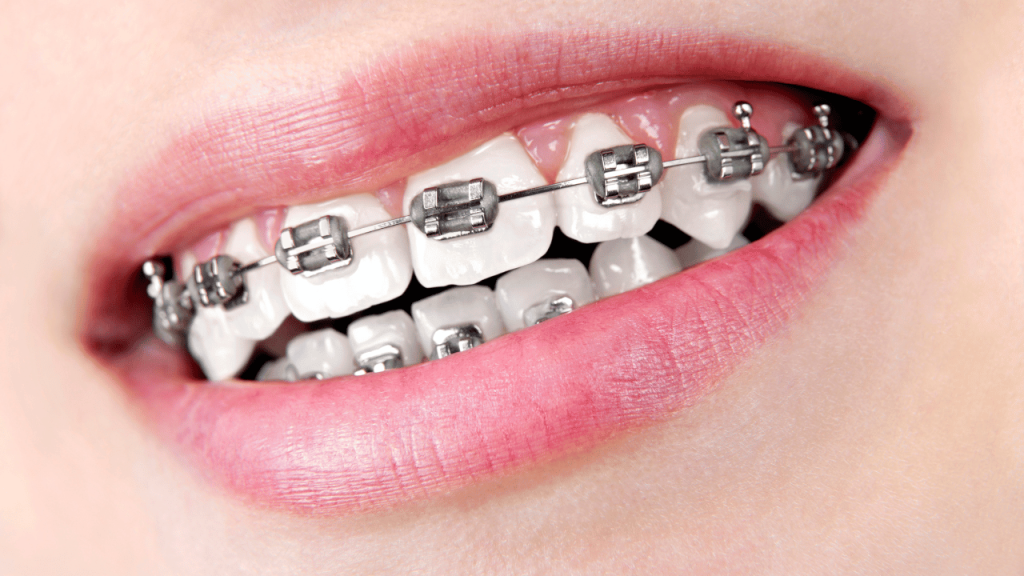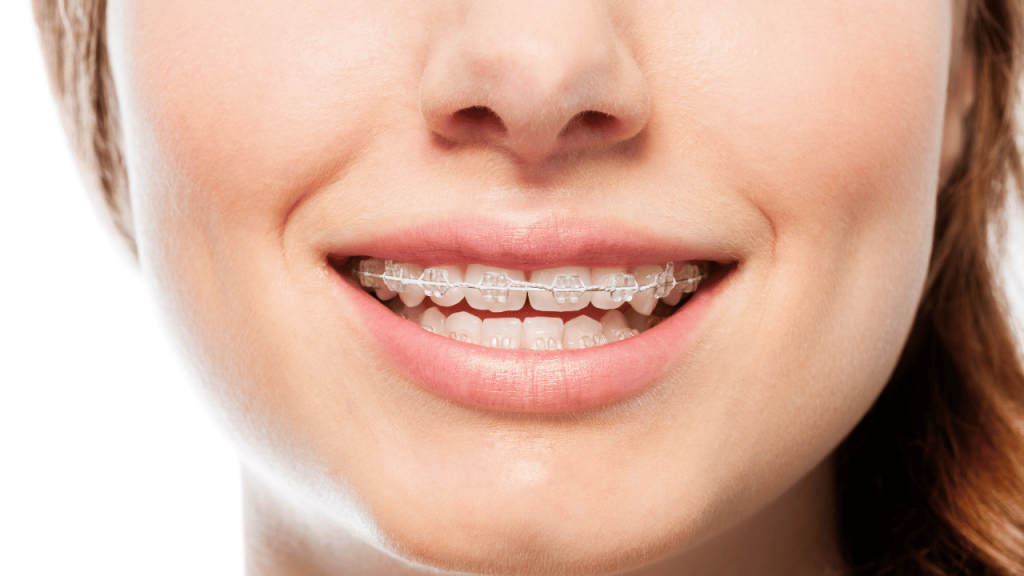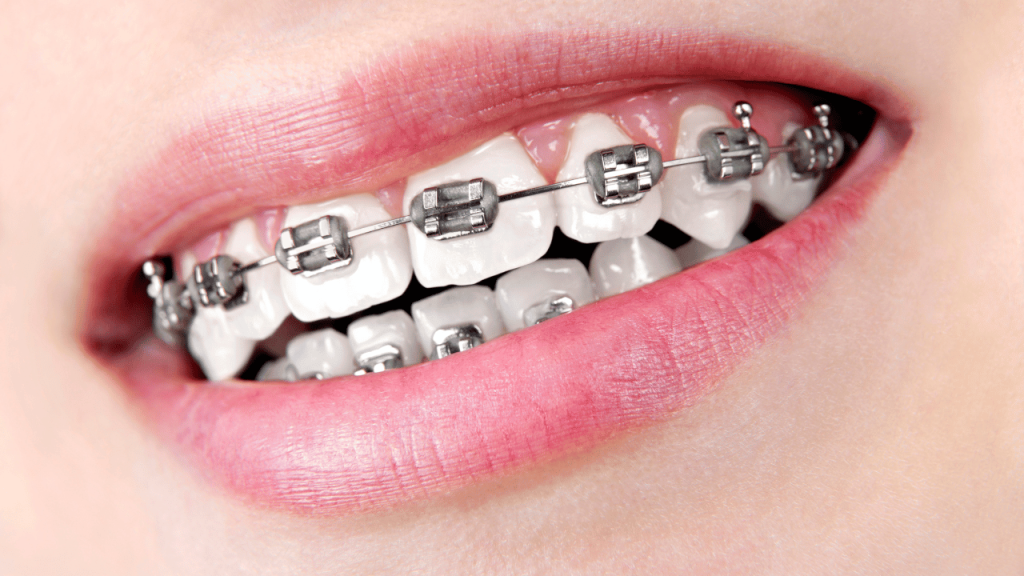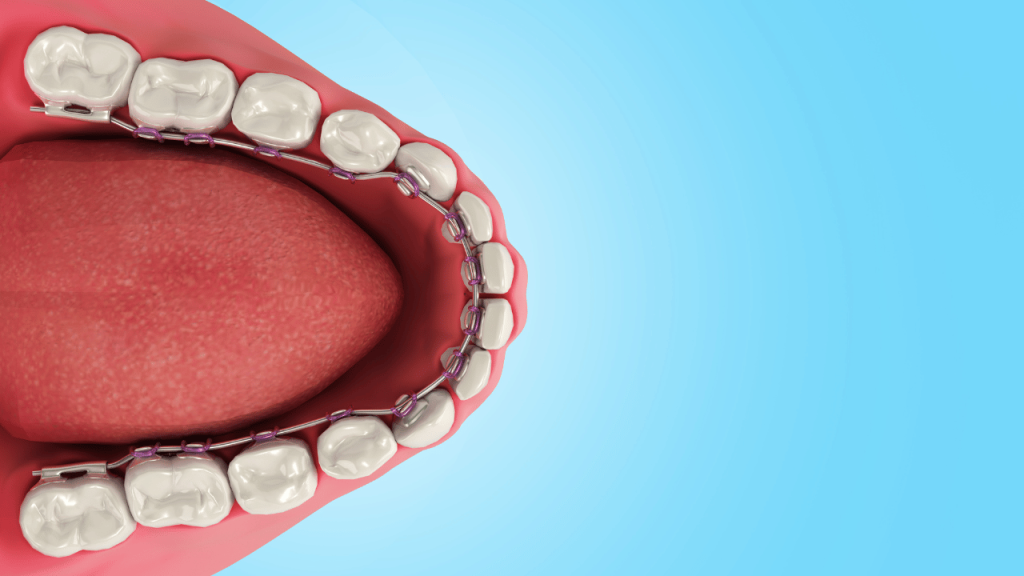
If you’re considering getting braces, it’s crucial to grasp how they work and what to anticipate during the treatment process. Dental braces, or orthodontic treatment, rectify various dental issues, including crooked teeth, overbites, underbites, and gaps between teeth.
With a wealth of experience spanning 8 years at Dental Care Guide, our dentist firmly believes that patient empowerment through knowledge is the key to successful orthodontic treatment. Understanding how braces work not only makes patients feel more confident but also more invested in the treatment process. So, let’s delve into the workings of dental braces and what you can expect during your treatment.
Key Takeaways
- Dental braces correct various dental issues, including crooked teeth, overbites, underbites, and gaps between teeth.
- Understanding how braces work can help you feel more informed and empowered as a patient.
- By understanding the different types of braces and what to expect during the treatment process, you can decide whether orthodontic treatment is proper for you.
Understanding Braces
Dental braces use constant pressure to gradually shift teeth into the desired position using brackets, archwires, bands, and ligatures.
How Do Braces Work?
Dental braces are orthodontic devices that apply constant pressure to gradually move misaligned teeth and jaws into the desired position. They can correct overcrowding [1], spacing [2], overbite [3], underbite [3], and crossbite [3] issues.
Braces work by applying constant pressure to shift teeth over time. This pressure is applied by ligatures and archwires [4], which stretch and compress the periodontal ligaments. This stimulation of bone cells leads to the breakdown and rebuilding of bone, allowing the teeth to move. The duration of this process varies, and it’s important to maintain proper oral hygiene to prevent tooth decay.
Types of Braces
If you’re considering braces, you might wonder what your options are. Several types of braces are available, each with its benefits and drawbacks. In this section, we’ll explore the different types of braces and what sets them apart.
Traditional Metal Braces

Traditional braces, called metal braces, use metal brackets and wires to strengthen teeth and improve smiles.
Description and Functionality
Traditional braces apply constant pressure to gradually move your teeth into the desired position. Your orthodontist adjusts the brackets and wires periodically. The process can take months to years, depending on your case.
Visibility and Customization Options
Traditional braces are noticeable and can make you feel self-conscious. However, you can customize them with colored elastic bands to add fun and a pop of color to your braces.
Ceramic Braces

Ceramic braces are like traditional metal braces made of clear or tooth-colored materials to blend in with your teeth. They apply gentle pressure to move your teeth into the desired position.
Aesthetic Advantages
Ceramic braces are less noticeable than metal braces, making them a popular choice for those concerned about appearance. They are a good option for people who want to straighten their teeth discreetly.
Comparison with Metal Braces in terms of Durability
Ceramic braces are also durable and can withstand the normal wear and tear of everyday use. They are made of solid materials that can last for your treatment. However, they may be more prone to cracking or breaking than metal braces, so it is essential to take care of them properly.
Self-Ligating Braces

If you’re considering braces, self-ligating braces are similar to traditional ones but use a built-in mechanism to hold the archwire, requiring fewer adjustments and shorter treatment times. They can reduce discomfort, require fewer appointments, and be more discreet. There are two types: passive and active, with active braces providing more control over tooth movement. While they may be more expensive, they can be a worthwhile investment in your dental health. Talk to your orthodontist to see if they are right for you.
Lingual Braces

Lingual braces, also known as invisible braces, are placed behind the teeth to concealment. They work like traditional metal braces but are not visible. They are popular for people who are conscious of their appearance. However, they can be harder to clean and maintain and more uncomfortable to wear.
Clear Aligners

Clear aligners might be the right choice if you’re considering a discreet way to straighten your teeth. They use removable plastic trays to gradually move your teeth into the desired position.
Invisalign is one of the top brands for clear aligners. Each aligner is usually worn for a week at a time, for at least 22 hours a day, and gradually shifts teeth by a small amount, typically a fraction of a millimeter. You must remove the aligners when consuming anything other than water.
Your orthodontist [5] will take a 3D scan of your mouth to create a custom treatment plan. Then, a series of aligner trays will be created. You’ll wear each tray for one to two weeks before moving on to the next one. Gradually, your teeth will shift into the desired position.
Clear aligners are an excellent option for straightening teeth without the visibility of traditional braces. They’re also removable and easier to clean. Your orthodontist can help you decide if they’re right for you.
Ideal Age for Braces
The question of when is the best time to get braces is not a simple one. The ideal age for braces is typically between 12 and 13 years old, when children’s mouths and jaws are still growing, making it easier to correct misalignment or bite issues. However, this is not a rigid rule, and the ideal age may not be the right time for your child. This flexibility should reassure you that there’s no rush or pressure, and you can make the decision that’s best for your child’s dental health.
In fact, about 20% of all orthodontic patients in the United States are over the age of 18. This trend of adult braces is increasing, and many adults are opting for orthodontic treatment to correct long-standing dental issues or cosmetic concerns. Adults can benefit from braces just as much as children. However, adults may need to wear braces longer than children.
It’s important to note that the ideal age range for starting orthodontic treatment differs. Some children may benefit from early intervention, while others may not need braces until they are older. Regular check-ups with a dental professional are crucial to identify potential issues early and ensure timely intervention.
Procedure Details
If you’re considering braces to straighten your teeth and improve your jaw alignment, it’s helpful to understand the procedure details. Here’s what you can expect during the process of getting braces.
Initial Consultation
The first step in getting braces is to schedule a consultation with an orthodontist. During this visit, the orthodontist will examine your teeth and jaw to determine whether you have any orthodontic issues that need to be addressed. They will also discuss your treatment plan, including the braces that may suit your needs.
Assessment and Treatment Planning
Suppose you decide to proceed with braces. In that case, the orthodontist will perform imaging and diagnostic tests to better understand your teeth and jaw. This information will be used to develop a customized treatment plan tailored to your specific needs.
Installation Process
Once your treatment plan has been developed, the orthodontist will install your braces. This step-by-step guide on applying braces involves bonding brackets to your teeth and threading a wire through them. The wire is then secured to the brackets with elastic bands.
Duration and Patient Experience During Installation
The installation process takes 1-2 hours. You may feel discomfort as your teeth adjust to the braces, but it can be managed with over-the-counter pain relievers.
Maintenance and Adjustments
After getting braces, visit your orthodontist regularly for adjustments. They will make necessary tweaks to ensure your teeth are moving correctly. Practice good home care and hygiene with braces to keep your teeth and gums healthy.
Benefits of Dental Braces
Dental braces offer many benefits beyond just straightening teeth. By improving the alignment of your teeth, braces can also help align your jaw, improving your bite and speech. Here are some of the benefits of dental braces:
Health Improvements
Dental braces can improve your overall dental health by preventing problems such as gum disease, tooth decay, and tooth loss. Straight teeth are easier to clean, making maintaining good oral hygiene easier. This, in turn, can help prevent common dental problems and improve your overall oral health.
Long-term Dental Health Benefits
In addition to the short-term benefits, dental braces can also provide long-term dental health benefits. By correcting misaligned teeth, braces can help prevent problems such as tooth wear, jaw pain, and headaches. This can help you maintain good dental health throughout your life.
Aesthetic and Functional Gains
Dental braces provide both aesthetic and functional benefits. They straighten teeth, improving appearance and self-esteem while correcting bite problems to enhance speech and ease eating and chewing.
Potential Side Effects
Remember: Dental braces can cause discomfort and side effects. Be aware to minimize issues and ensure successful treatment.
Short-term Discomfort
When you first get braces or have adjustments, you may feel discomfort or soreness due to the pressure of your teeth moving. This should only last a few days and can be managed with over-the-counter pain relievers or orthodontic wax.
Long-term Considerations
Remember to maintain proper oral hygiene while wearing braces to prevent gum disease and tooth decay. Also, be careful with the foods you eat to avoid damaging the braces, which can lead to issues with your teeth and gums.
Frequently Asked Questions
What are the common side effects of wearing dental braces?
Wearing dental braces can cause some discomfort and side effects. Some common side effects are soreness, tenderness, and discomfort in the mouth and teeth. You may also experience some difficulty speaking or eating while wearing braces. Additionally, braces can cause slight discoloration or staining of teeth, but your dentist can quickly treat this.
After getting braces, how soon will you start to notice teeth movement?
After getting braces, you may notice teeth movement within a few weeks. However, the time it takes to see significant changes can vary depending on the case. To ensure the best results, following your orthodontist’s instructions and attending all scheduled appointments is essential.
Is there an age limit for getting dental braces?
There is no age limit for getting dental braces. While it is common for children and teenagers to get braces, adults can also benefit from orthodontic treatment. Many adults now get braces to improve their smile and oral health.
How long does the entire orthodontic treatment with braces usually take?
The length of orthodontic treatment with braces can vary depending on the individual case. According to aaoinfo.org, treatment can take anywhere from 6 months to 2 or more years. Following your orthodontist’s instructions and attending all scheduled appointments is vital to ensure the best results.
Can you explain how braces gradually move teeth into their correct positions?
Braces apply constant pressure to the teeth, gradually shifting them into proper positions. The brackets and archwire exert this pressure, which stretches and compresses the membrane under the gums, allowing the teeth to move. Over time, the bone surrounding the teeth remodels to support the new tooth positions. Depending on the individual case, this process can take several months to several years.

